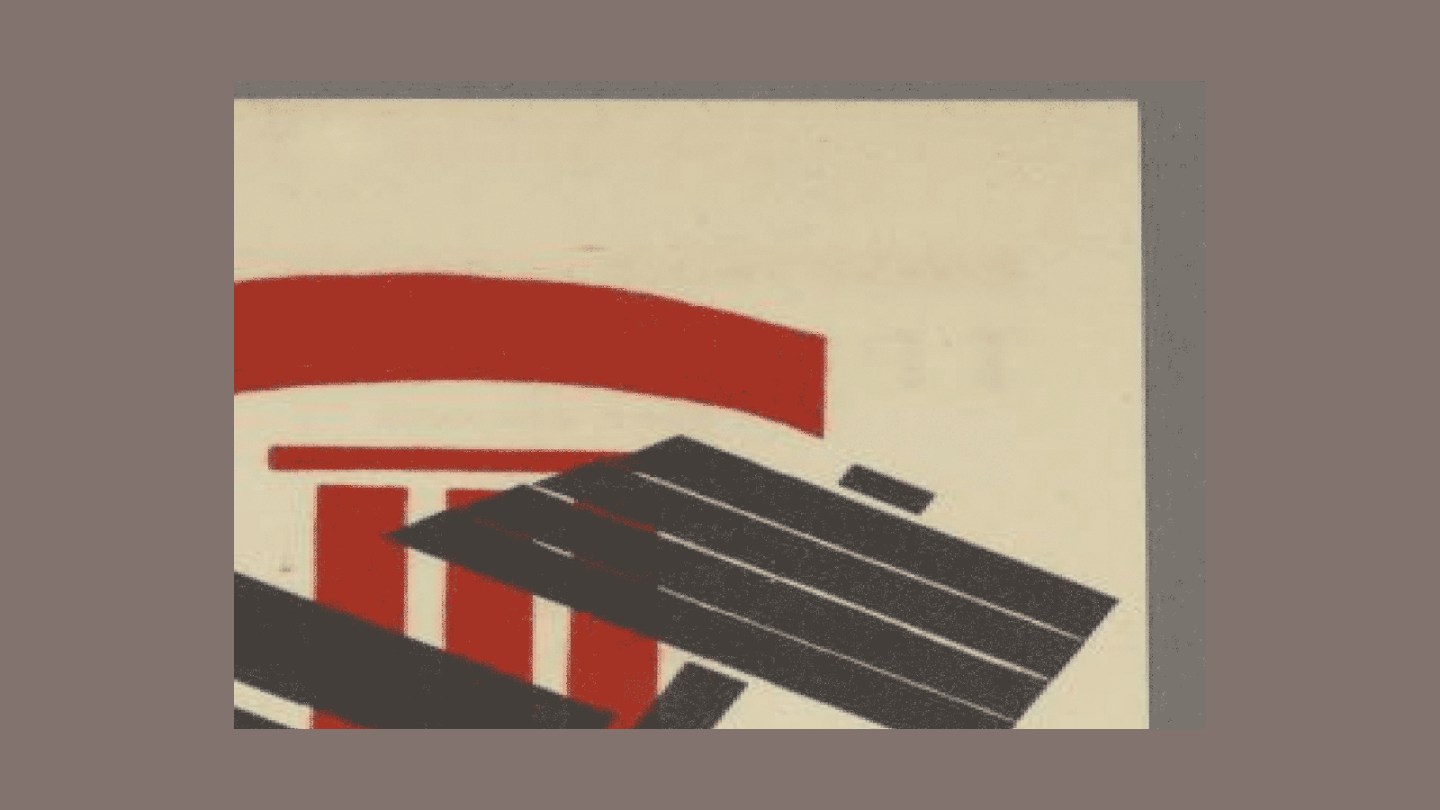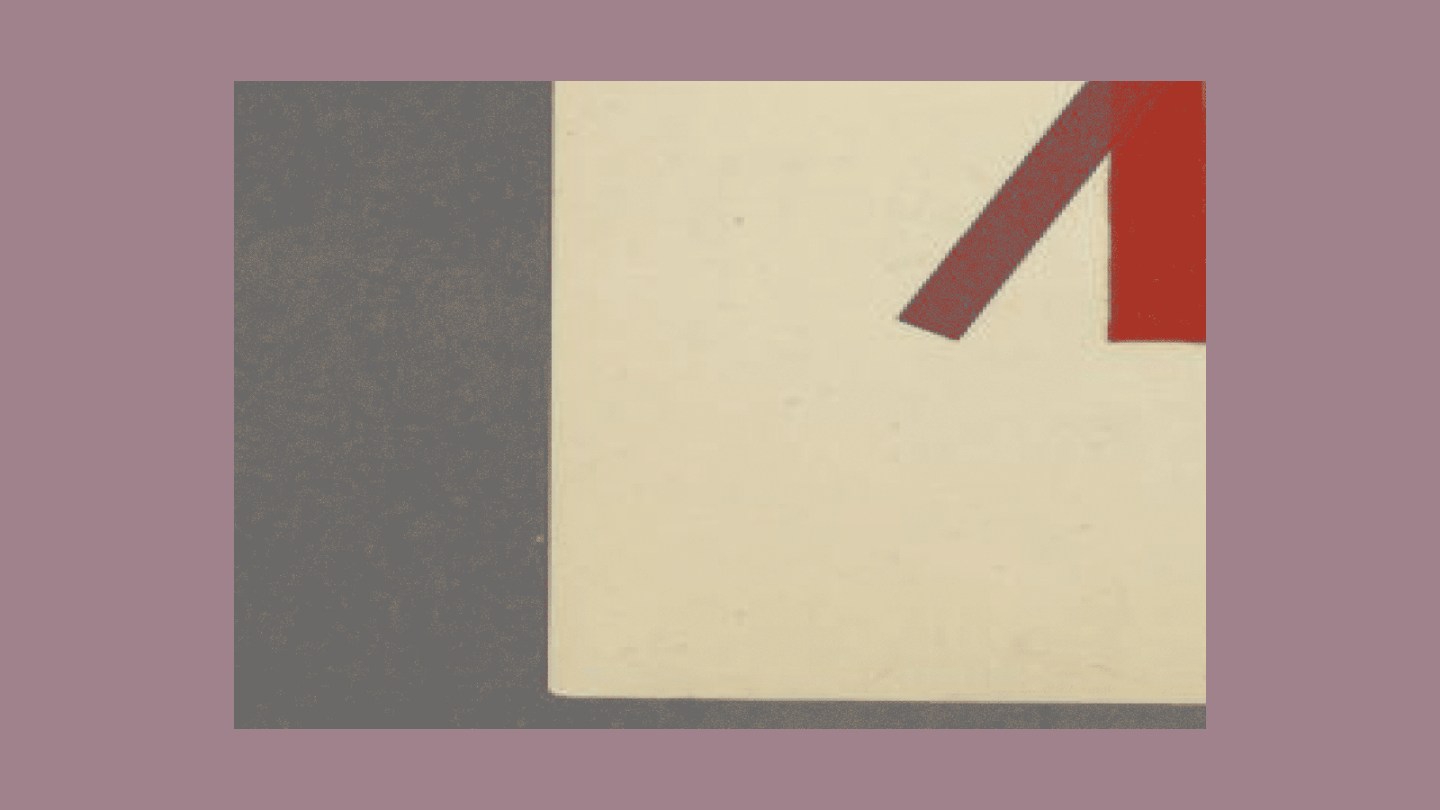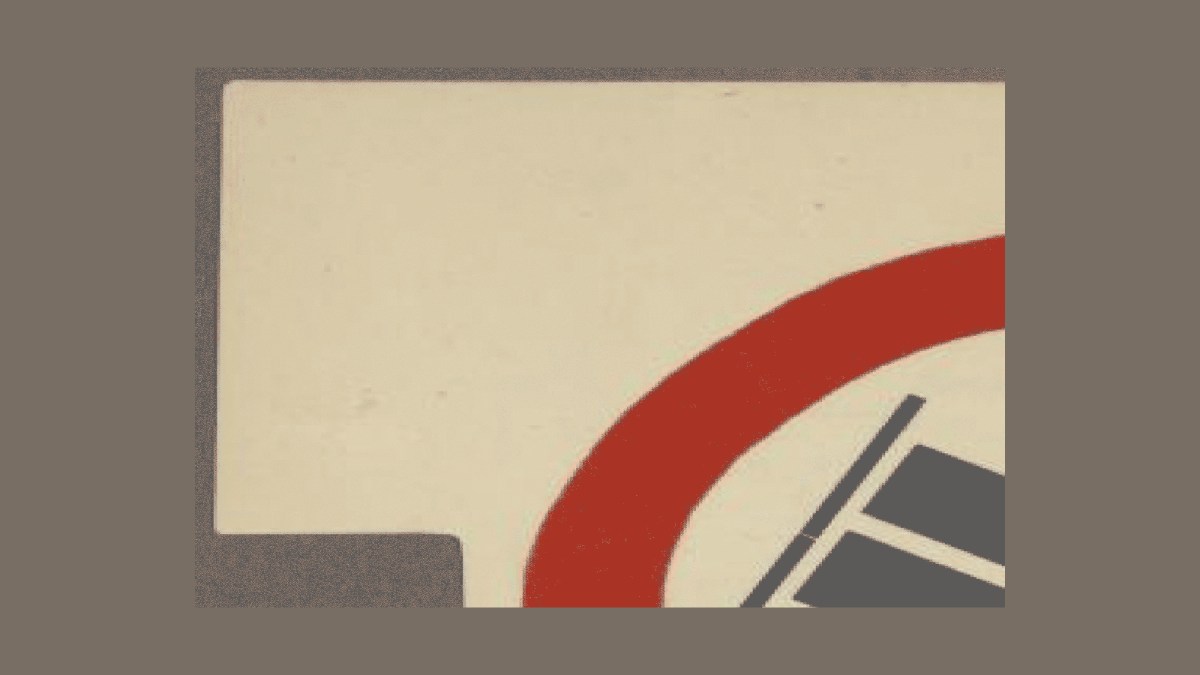The first time that Siwan Rhys played Galina Ustvolskaya’s music in public, something strange happened. She’d been asked to play Ustvolskaya’s arresting Sixth Sonata at the launch of Kate Molleson’s book Sound Within Sound at Cafe OTO in Dalston. This wasn’t the first time that Rhys had encountered Ustvolskaya’s musical worldview—she’d first heard it live at the Occupy the Pianos Festival around 2017, organized by her then-teacher Rolf Hind—but it was her first time learning it for herself, and presenting what it meant to her in public.
“Nothing had quite prepared me for how loud I was going to try and play in the performance,” Rhys said. “Like, I knew I was going to try and play loud, but a switch flicked inside me, and I accessed this sort of, you know, rage, that I wasn’t expecting.” But rage wasn’t the right word—“Ustvolskaya’s music is not all angry”—and Rhys retreated, replacing rage with fire.
Mid performance, the fire spread. Rhys was reminded of a conversation she’d had with singer and composer Laura Bowler, who, for Jennifer Walshe’s piece “Training is the Opposite,” was put under a grueling regime where she learned how to become a champion boxer. Despite all the training, Bowler had been reluctant to get in the ring before the performance. “But once she was in the ring, something happened and she just turned into a killer,” Rhys said. “She flipped, and she was gonna, like, take down the other person.” It was similar to what she felt during the Ustvolskaya. The act summoned some inner terror: “It was so extreme that when I finished playing, I laughed at myself.” Afterwards, a colleague asked her why she was laughing; it’s hardly the most comedic music. Rhys had no idea.
The fourth, fifth, and sixth Sonatas of Galina Ustvolskaya are rarely programmed together, apart from in extreme circumstances. The sonatas are intensely physical works: pianists must strike the keys with the knuckles; play loud, repeated forearm clusters; and spread their fingers sideways across multiple keys at once.
In spite of the huge expressive force these gestures carry, they’re expressed on the page with a clinical coldness. At the bottom of the first page of the fourth movement of the fifth sonata comes the instruction to “Strike with the knuckles of the left hand (4 fingers curved, thumb protruding at an angle) and ensure that this is clearly audible.” The final aside is faintly masochistic.
“It’s a bit brutal,” Rhys said of that passage. If she treated it like a piece of classical piano music—playing “out of the key” by pressing the knuckles, rather than striking, followed by a release—it would be less of a problem. “But then you don’t get a knock, which means I have”—Rhys’ speech was interrupted by sudden, insistent knocking on her kitchen table—to *knock* do *knock* this *knock* in order *knock* for it to come out.” The dynamic is the peak of the concert. (At six fs, it’s also a nameless dynamic, already well on the way to becoming a feeling.)
Later, I tried the same passage at the piano. The first strike isn’t painful, neither is the fifth, but as repetitions grow in multiples—tenth, 20th, 35th—practice, motion, and pain dissolve into one flashing feeling. Practicing this for oneself feels like flagellation; what might practicing for performance feel like, physically, psychologically?
Rhys will perform all three of these sonatas in a single concert at the Southbank Centre in London on July 6. These pieces work at the height of abstraction, with steely, unique gestures shorn from their musical antecedents. As a trio, they seem on collision course with performers and their bodies: performers who have other concerts either side to prepare for, with minds mindful of conversations around creative health and bodies that can’t afford to break.
Over the space of a few weeks, via text, voice message, and in one long conversation in person on a Friday afternoon in June, Rhys spoke to me about her process of preparation: the mindset and practice regime involved in tackling works whose truths are so intertwined with pain.

May 31, voice note
Siwan Rhys: I’ve been trying to work out my limit of what is comfortable: working out the safest and least painful ways of doing things effectively. When I was originally practicing [Sonata No. 6] I did once or twice push myself to the limit to see how that would feel. But nothing really prepares you for how it feels to perform that for the first time. It does also feel part of the aesthetic to slightly suffer with these pieces.
Finding meaning in phrases that are so stark and austere, sometimes it can feel extremely exposed. In a funny way, it reminds me of Mozart, where, as a performer, one can feel vulnerable in it. Mozart, like Ustvolskaya, is simple-seeming music in some ways, but it can feel hard to communicate. Sometimes it goes with my mood. I’m yo-yoing between—am I doing too much, am I doing too little, to make something of this music, to make something of this phrase.
You can have similar dilemmas with music like Mozart. You have to find a way to let it speak for itself, because that’s enough a lot of the time, but it’s hard to step back in the right way.
June 7, in person
By her own admission, fire or rage is not a quality that comes out of Rhys very often. “I’m generally quite a quiet person,” she said, quite quietly. In crowds, she spends long periods of time silent, observing. “I feel like I’m participating in the conversation, but very often I’m not saying anything.” When we spoke, I found myself feeling more vulnerable than usual, without the familiar buttress of somebody nodding along while not quite listening.
Rhys is Welsh. Born in North Wales, her father’s job with the Welsh Language Board led her family to the south of the country. She studied in Cardiff, and later in Lyon and Rennes, where she taught the Breton-speaking population Welsh. (Both are part of the Celtic language group.)
Her teacher in Lyon, Florent Boffard—a former pianist with Ensemble intercontemporain—showed Rhys that she could pursue a career dedicated solely to contemporary music if she wanted to. She then returned to the UK, moving to London to study at the Guildhall School for Music & Drama with Hind. She met her partner, George Barton, preparing for a performance of Morton Feldman’s four-hour “For Philip Guston.” Now the GBSR duo, they live just outside Romford, Essex, about 15 miles northeast of London, in a long-backed bungalow full of instruments. It’s a quiet place, the sort of place where you can distinguish the different local bird calls while sitting at the kitchen table.
Rhys entered Ustvolskaya’s world from a place of quietude; there’s something unnatural about a quiet person being loud that adds an extra dimension to both the pieces and performances. “I found her music, in some ways, quite natural to access,” Rhys said. “Her language made sense to me.”
The quieter sections, a lot more regular in the sonatas than one might think, contain a solemn glow, like all the fury around it is sucked into a vacuum. (Then, with a memory of all that, you hear the blood move through your brain.) This alternative character is essential to music often stereotyped as merely brash. “In publicity around her concerts, there’s a tendency to fetishize that element of her music: it’s violent at times, it’s loud, you’re gonna be bruised… Obviously that is a thing, and it’s actually quite important in her music, but…” The loud passages take up the most space, but it’s the quiet passages where focus is regained, where the conscience is pricked.

June 3, voice note
SR: I had a chiropractic appointment a couple of weeks ago. Playing this music, particularly the arm clusters, can be a little taxing on the body. (It’s also my fault because I’ve not been exercising.) He asked me what I’d been doing to put my spine and pelvis so out of joint. I told him about this piece. He is giving me strengthening exercises for it, and another appointment.
It made me think that playing this stuff is a young person’s… a young woman’s game, but maybe the aesthetic is an older… woman’s thing.
June 7, in person
VAN: Are you any further with those dilemmas about age and physicality?
I think if I had learned these when I was 18, I would have found them fun and a good challenge, and I think I would have been able to access a kind of level of anger, or something required to interpret parts of the music. But maybe inside, I wouldn’t have known why, or what the anger comes from, or the other very complex feelings associated with the music. It’s not all angry, but that was the easiest color to find when I was younger.
I guess there’s something about the austerity and starkness of her music that somehow feels like it connects with elements of my personality. The need to be quiet or still is really important to me, and I need to be really, really focused on things.
In VAN, Patricia Kopachinskaja has said that “it’s kind of impossible to play this music without hurting, because that’s the way that you access its truth.” I found it an interesting proposition to see if those terms might be flipped—if there’s another, separate truth that can be accessed without hurting someone?
In a way, she’s right. Something always comes out in performance that doesn’t in rehearsal, because you’re adrenalized, you’re really committed, you’re pushing yourself. I always like to leave something to the performance, and that’s when you’ll find the “truth” she’s getting at. You have to try and get a glimpse of that in your practice beforehand.
But if you practice like that all the time, you’ll destroy yourself.

May 31, voice note
SR: The other thing I’ve been doing is singing some of Ustvolskaya’s melodies…Even the word melody doesn’t quite sound right. I’ve been learning to sight-sing them because they’re stark. They’re lines of crotchets. She doesn’t use phrase marks, she doesn’t give a sense of how she wants something to be shaped, but they’re often rotating around a cluster of notes, going up a semitone, going down a tone, maybe going up a tritone, then going down a minor third…
It’s these angular, unexpected melodies, written out in plain style. You can play through them without really taking in the shapes, but to actually get under their skin is a little more challenging. I feel a little like a malfunctioning psalm singer of some kind. Her melodies have more than a hint of “old music” about them, where the notes aren’t quite right.
June 12, audio
June 14, text
SR: As I type, I’m actually in another rehearsal, but here I am thinking and typing to you about Ustvolskaya.
June 17, text
We spoke about Stanislavski in person, and leaving some of yourself out there in the performance… there’s almost a method-ness required to approach these pieces, like, you almost inhabit her very isolated world. How do you deal with that when you’ve got other gigs going on, other stuff to learn?
I’ve found this very difficult to do with the Ustvolskaya because the music really demands your attention, and so I’ve only really found it possible to work on her music when I dedicate a whole morning/afternoon or a whole day to it.
The music demands the interpreter to be so honest. There’s nowhere to hide in the material, behind charming features or appealing imagery or soothing/transporting stuff. Everything is bare and open and brutal, and I think that if I’m not completely comfortable with/convinced by how I feel about every moment, I think that will be completely obvious to see and hear in concert. I have to be prepared to be completely vulnerable on stage, and for the audience to be able to see my most basic and fundamental, stripped back, no-frills feelings.
Of course one could argue that one should be completely convinced by every moment is how interpreting any music is or should be, but I do think this is more extreme, or a more distilled version. I’d advise anyone making that argument to play some Ustvolskaya and then come back to me.
Preparing everything I have to prepare has been a bit like spinning plates, but I haven’t been able to fit the Ustvolskaya into that mode of working.
(I’m writing all of this on the train to see the chiropractor btw.)

June 24, voice note
SR: The main thing is it’s starting to feel as though all the strands are coming together a little bit, and I’m getting a much clearer view with what I’m doing with [the] pieces. That’s resulting in shorter practice sessions with the pieces, but the sessions are more tiring, because I’m trying to crystallize something.
Physically, I’m doing ok… I’m getting a good sense of what it’s going to be like, physically speaking, and how inevitably I will push a bit too close to painfulness. That’s what’s going to happen, but it’ll be brief and temporary.
And I’m looking forward to it! It’s less than two weeks away now, so it’s a tangible thing. When that happens, there’s an element of acceptance. I’m making it sound like the six stages of grief, but, you know, it’s actually going to happen [now]. I really have to get my thoughts in order, and that’s quite a nice feeling. ¶

